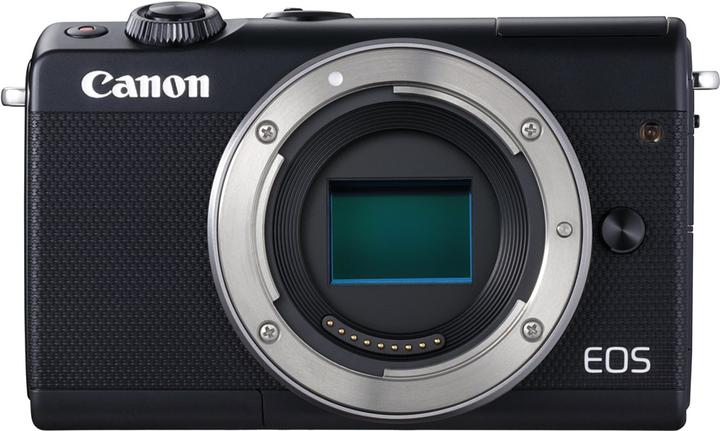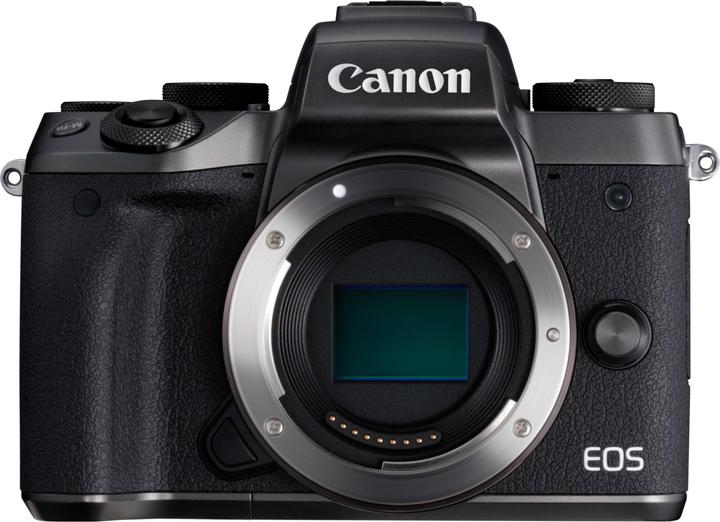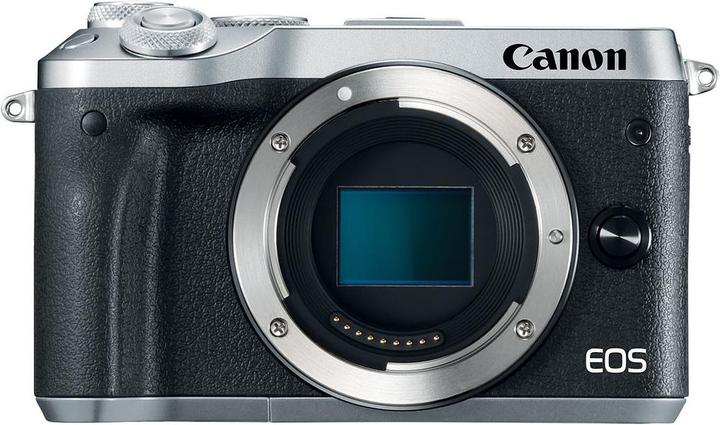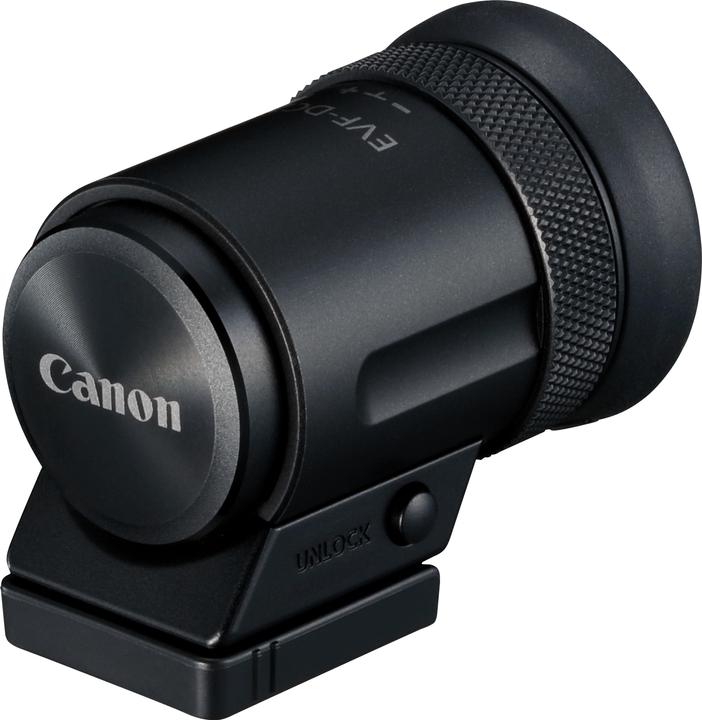
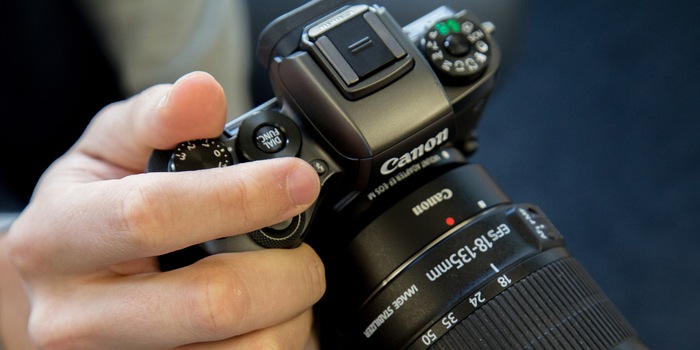
The great potential of Canon mirrorless system cameras
Mirrorless system cameras have a number of design-related advantages. Canon also has a special advantage: the entire range of SLR lenses can be used without loss.
Mirrorless system cameras were one of the most important innovations in digital photography ever. As practical as the mirror for the viewfinder is, it also has some disadvantages.
The mirror construction takes up a lot of space. In an SLR (single-lens reflex camera), the mirror is positioned at a 45-degree angle to the lens. In the diagram below, this is number 2, which reflects the image upwards to the prism (7), where further mirrors direct the image through the viewfinder. Flat housings are not possible with this method.
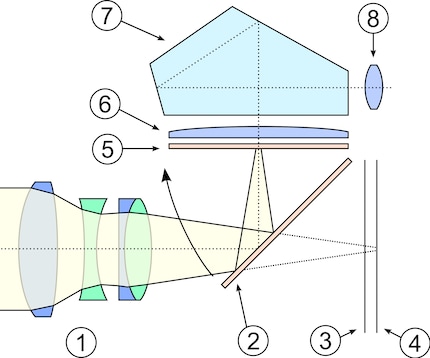
Graphic: Wikimedia/CBurnett, CC BY-SA 3.0
The mirror must also be flipped up each time the shutter is released (5) so that light falls on the sensor (4). This causes a slight vibration, making it difficult to take blur-free pictures under certain circumstances. It also makes a noise when it is raised. If you want it to be completely still, an SLR is not the right camera.
When shooting video, the mirror is permanently flipped up. That's why you can't see anything in the viewfinder during recording. For a long time, SLR cameras could not record videos at all. However, the normal, powerful autofocus on an SLR only works when the mirror is down. This also has consequences in continuous shooting mode: the mirror has to be moved for each individual shot. Mirrorless systems therefore tend to have an advantage for video and continuous shooting.
Canon took a relatively long time to develop its own mirrorless system - perhaps because the brand was very strong in the SLR business and did not want to compete with itself. But Canon has solved this problem cleverly: its own mirrorless system is not a competitor, but an extension of the SLRs.
Easy and affordable access to SLR lenses
What sets Canon's mirrorless cameras apart from the competition is the adapter for SLR lenses. This means that the huge range of lenses can also be used on the mirrorless system - with no ifs or buts. Normally, lens adapters are expensive and entail a loss of functions (electronic control) or even image quality. None of this is the case here. The adapter is ridiculously cheap and fully functional, for example with regard to open aperture and autofocus. It is also sturdily built and has its own tripod thread.

Large sensors in a small housing
The Canon EOS M mirrorless system uses sensors that are roughly the same size as most SLR cameras (APS-C). Nevertheless, very compact cameras are possible, precisely because the entire mirror construction is eliminated.
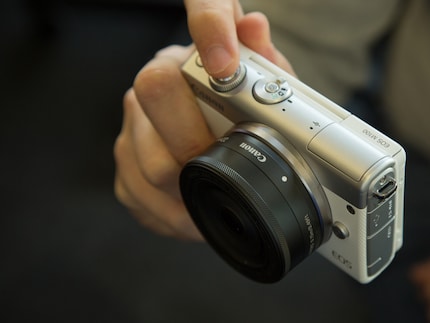
Models such as the Canon EOS M100 therefore deliver the image quality of an SLR, but have the body of a compact camera.
Operation at SLR level: Canon EOS M5
But not all mirrorless cameras look like compact cameras. Because when using large SLR lenses, it is not the small size that is most important, but rather SLR-like operation. That's why there are compact models such as the Canon EOS M100 as well as the EOS M5.
The EOS M5 offers a viewfinder, a handgrip, rotary dials and additional buttons for manual settings - in other words, everything you'd expect from an SLR. The viewfinder is electronic, of course, because there are no mirrors. An electronic viewfinder requires a little more power, but has the advantage that you can see the image as it will look in the final shot.
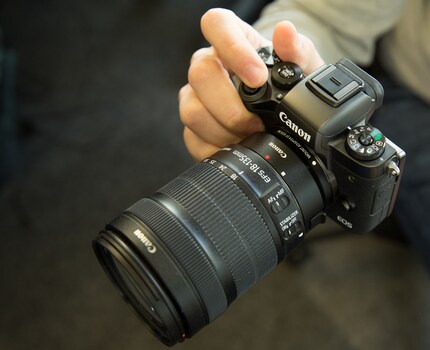
SLR feeling without SLR: Canon EOS M5 with an SLR lens and the lens adapter
Sometimes compact, sometimes professional: EOS M6
Even with all the controls, the mirrorless cameras are still smaller than an SLR camera. The lenses of the EOS M system are also slightly smaller on average.
On the comparison site Camerasize.com you can see exactly: Canon EOS M5 vs. Canon D80
The Canon EOS M6 model takes advantage of its smaller size without sacrificing SLR operation. As with the M5, Canon has built in all the necessary controls of an SLR, the only thing missing is the viewfinder. This makes the camera even more compact than the M5.
You can buy the viewfinder separately if required. The viewfinder can be attached to the accessory shoe in two seconds. This makes you extremely flexible: depending on your mood, you can use the M6 as a compact or SLR-like camera.
The current special offer for Canon EOS M
If you're already completely convinced by the Canon EOS M but are still waiting for a good offer, here it is: For the Canon system cameras, there's a cashback from Canon on the one hand, and the same discount again from us on the other. So you benefit twice over.
How it works: Click on a product and scroll down to the "Voucher" entry. There you will see which code you need to enter during the payment process to benefit from the discount (e.g. "BUYEOSM6").
The offer is valid until 12 December. It applies to all products listed at this link. These include, among others:
My interest in IT and writing landed me in tech journalism early on (2000). I want to know how we can use technology without being used. Outside of the office, I’m a keen musician who makes up for lacking talent with excessive enthusiasm.
